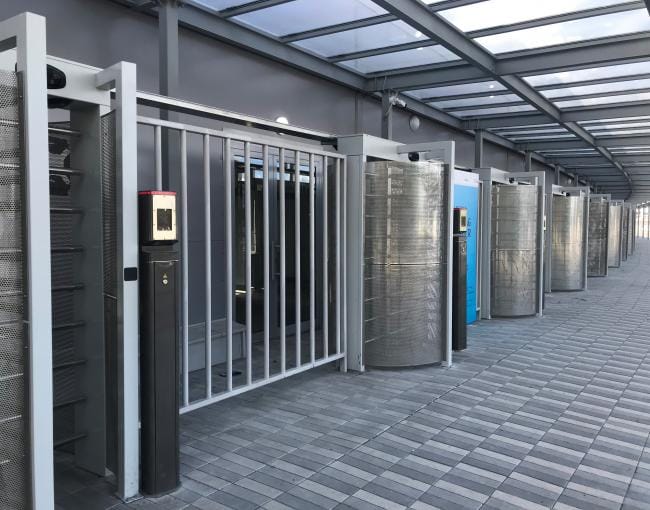Following CAME's initial Expo Milano 2015, and then the participation to the Astana EXPO 2017 event, the company won another key international account, to bring Made-in Italy technology to Russia. The Italian Group, leader in the supply of integrated technological solutions for automating residential, public and urban settings, has created the pedestrian-entrance control-system for the three new stadiums in Samara, Saransk, and Rostov-On-Don and for the entirely rebuilt stadium in Ekaterinburg.
These CAME-made solutions were inaugurated in June 2018, and together they can manage the access of over 160,000 fans to the four Russian sports arenas with their combination of innovative technology and quality materials - that can withstand the freezing winter temperatures – along with the context-specific design elements of the project. CAME's access-control systems were designed to seamlessly integrate into the styles of the four stadiums. All designed by prestigious, internationally renowned architectural studios, the stadiums are built with modern and futuristic architecture and blend into the urban surroundings with their iconic look.
The project also features an outer perimeter access-control system that regulates the entrance of all fans to the stadium and an inner access-control for spectators of the grandstands and VIP areas.
THE OUTER ACCESS-CONTROL SYSTEM
The outer-perimeter access-control system is composed of four-sector, Guardian series, full-height turnstiles whose sturdy structures and top-of-the-line materials can withstand both the intensive-use cycles and particularly harsh weather conditions. CAME turnstiles bring safety and reliability when managing and selecting entrances for major sporting events. They are equipped with motor-driven central rotor. The arms and grille are made of AISI 304 stainless steel and combine the very best of Italian aesthetics with the utmost capacity to withstand extremely cold climates and severe conditions.
CAME also installed a special, tailor-made version of the Guardian turnstile, that is, a swing-gate turnstile for special needs and to ease the access for people with disabilities.
THE INNER ACCESS-CONTROL SYSTEM
The XVia tripod turnstiles, designed by CAME for Expo Milano 2015, were chosen for the inner access-control system, which is dedicated to spectators in the grandstands and VIP areas. Designed to be integrated into large projects, the XVia combines technological innovation with meticulous aesthetic research. The sophisticated design, minimalist style and compact structure means the turnstile fits harmoniously and discreetly into a wide range of contexts.
Saloon swing-gate turnstiles were installed in the various VIP areas for easier access by spectators with disabilities.
In total, CAME installed 316 full-height Guardian turnstiles to externally guard the pedestrian access-points to the four Russian stadiums, and, 21 Guardian turnstiles - to facilitate the entering of spectators with disabilities to the facilities in Ekaterinburg, Samara and Saransk. And to guard the inner access-points to the stadiums we installed 292 XVia automatic turnstiles.
SOLUTION FEATURES
On the wake of Expo Milano 2015, where over 21-million people were given access - in just six months, and of Astana EXPO-2017, which counted five-million visitors, CAME proposed a solution based on its own innovative system, which is increasingly advanced and reliable, and that can communicate with any of the access-control and ticketing technologies available on the market. With all the teamwork of a dedicated division, plus the strong synergy between the Italian Headquarters and the Russian branch, CAME proves once again that it is a true solutions-provider capable of managing complex systems and creating highly customized solutions for major sporting events. The wealth of experience brought by its international subsidiaries allows the Group to better interpret customers’ requests and accurately respond with customized projects and solutions; ones that meet the needs of each specific territory, by assessing the complexity of the different architectural, urban and social scenarios related to each international project.


